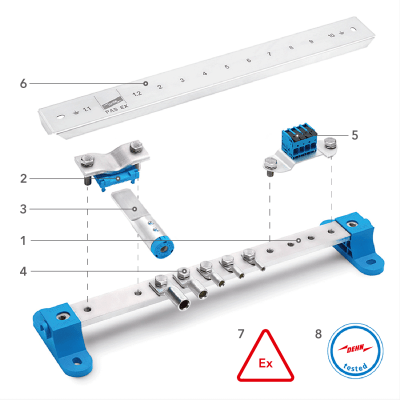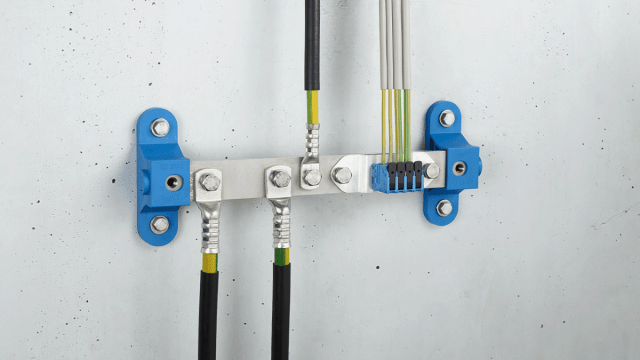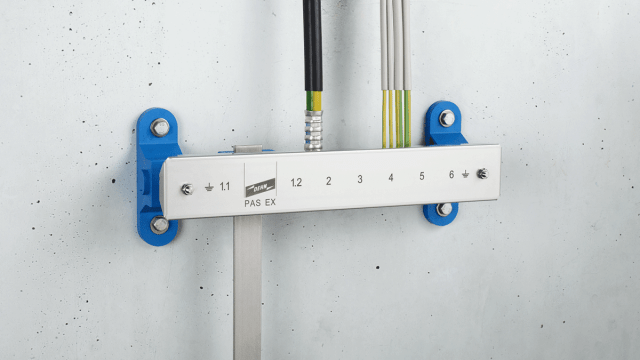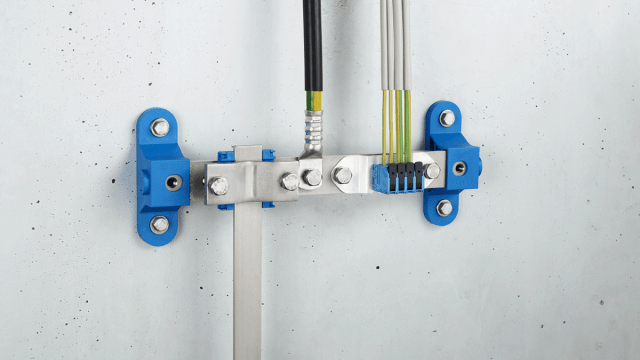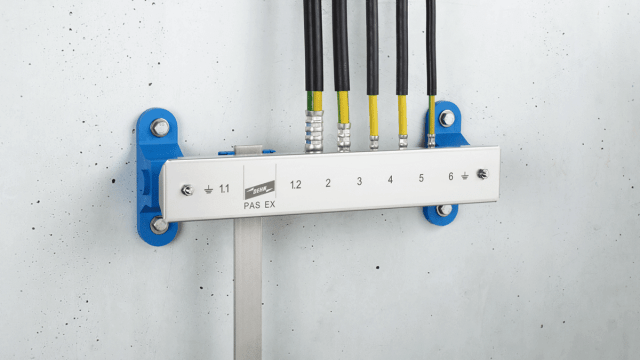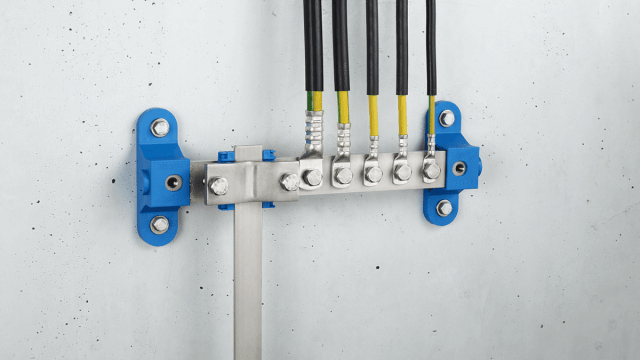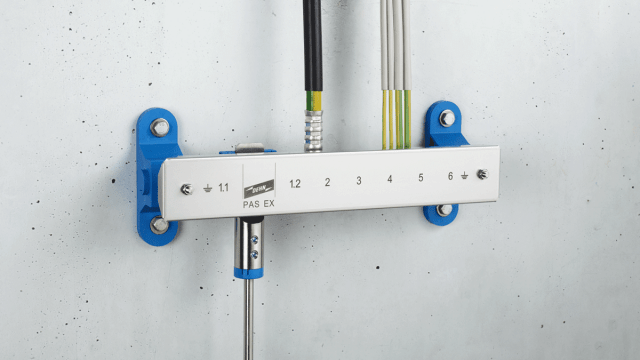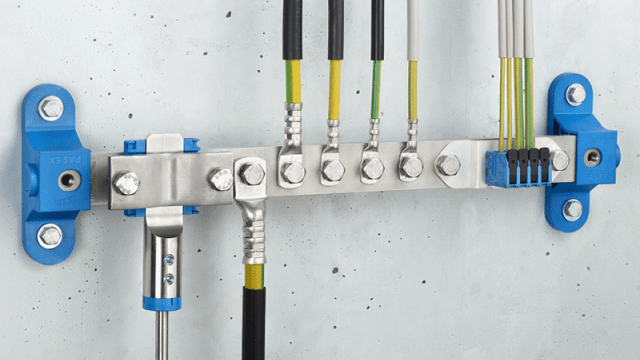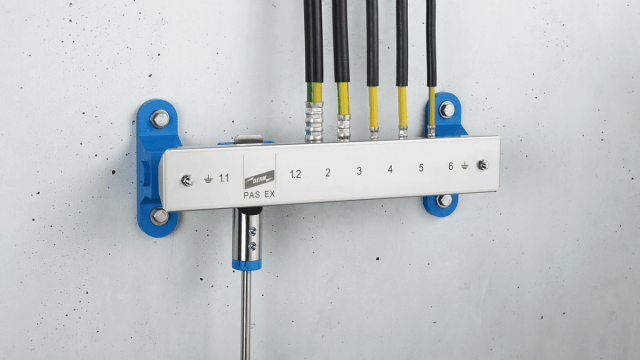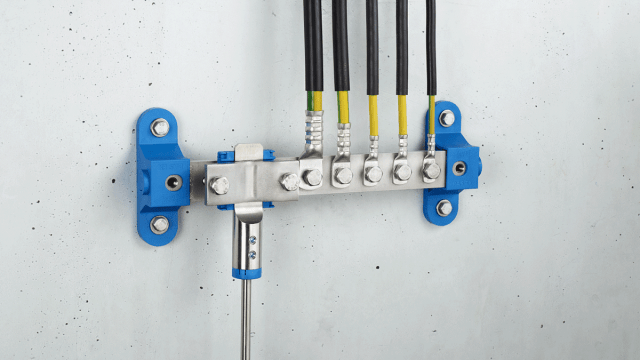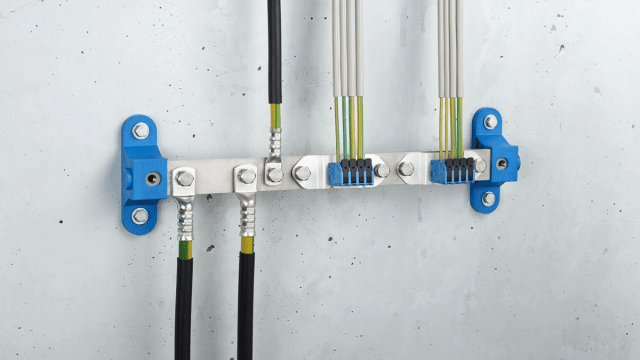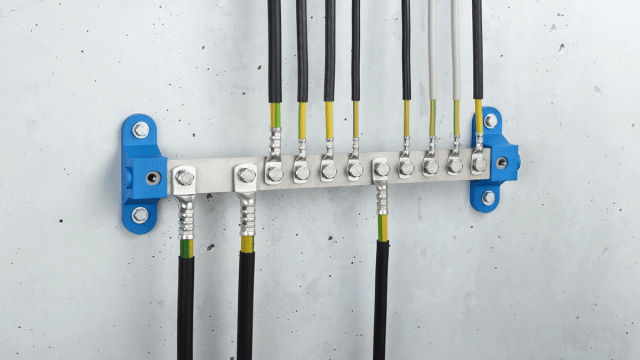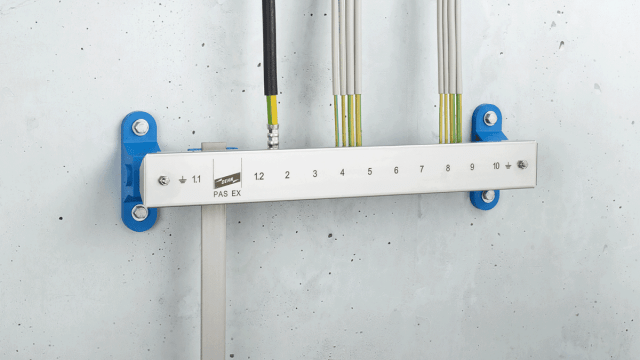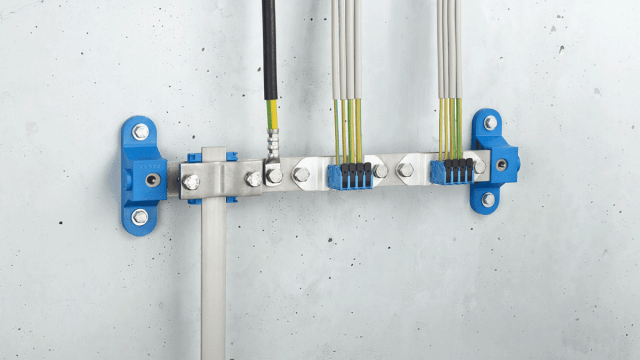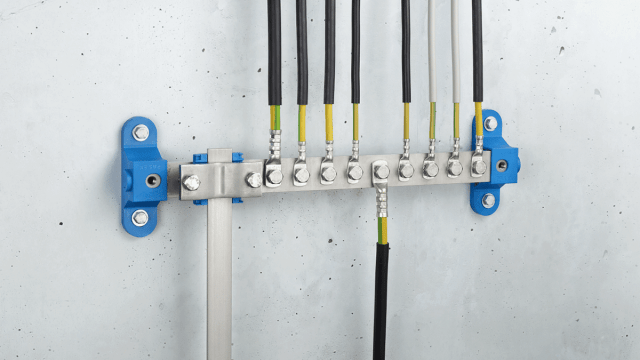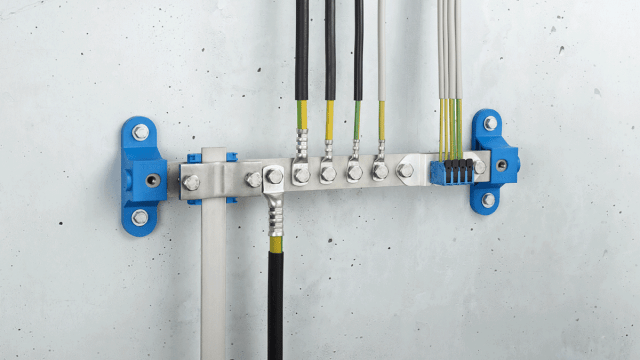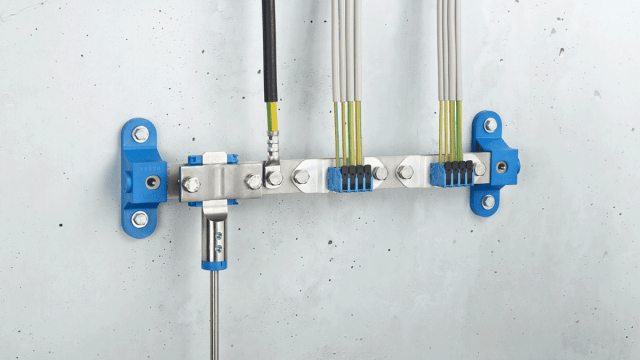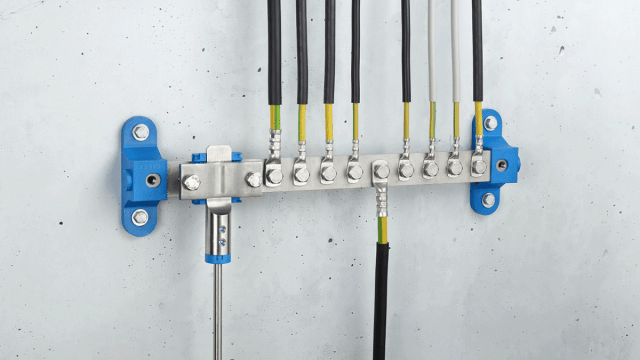DEHN protects hazardous area
Equipotential bonding systems form the basis for safe system operation. To eliminate potential differences and prevent dangerous touch voltages, all electrically conductive parts must be connected to the equipotential bonding.
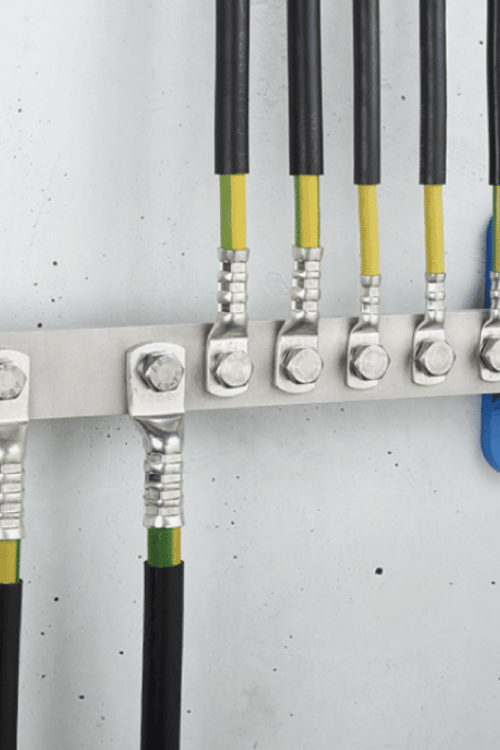
Non-sparking equipotential bonding bars
Lightning currents are particularly dangerous in hazardous areas.
To ensure that employees and facilities remain safe, the operator is obliged to provide protection in this area.
Non-sparking - tested with lightning currents
You can use the new PAS EX equipotential bonding bars in zones 1/21 and 2/22. They work in a non-sparking manner and their connections are secured against self-loosening.
Good to know
The absence of ignition sparking in case of lightning current was tested in a gas atmosphere in cooperation with an external test laboratory. PAS EX can also be used in applications with hydrogen.
Absolute versatility in every detail
This is what the new equipotential bonding bar for hazardous areas has to offer.
1. Flexible connection possibilities
Equipotential bonding bar in stainless steel (V2A)
in two versions (long with 11 and short with 7 connections)
2. Flat conductor connection
Defined cable routing for flat conductor connection
with 30 or 40 mm
3. Round conductor connection
Connection of round conductors up to 10 mm in diameter
using an adapter
4. Cable lug connection
M10 connection hole with thread for easy installation
of conductors of up to 95 mm²
5. Push-in connection
Connection of flexible and rigid conductors
without tools (4-16mm2)
6. Cover with connection marking
For easy identification of the connections
7. Universal use
In Ex zones 1/21 and 2/22
8. Tested solutionNon-sparking up to 100 kA (10/350 µs)
of lightning current and 50 Hz short-circuit currents
Advantages for you
Flexible use and diverse connection options in zones 1/21 and 2/22
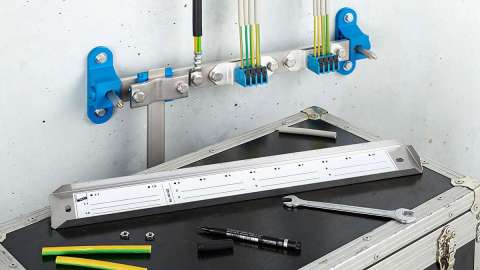
More safety in hazardous areas
The bars can be used in Ex zones 1/21 and 2/22 All connections are secured against self-loosening by means of spring washers.
Highly flexible
Flexibly configurable with a multitude of connection options.
Tested solution
Non-sparking up to 100 kA (10/350 µs) of lightning current and 50 Hz short-circuit current.
Tested in a gas atmosphere (explosion group IIC/hydrogen).
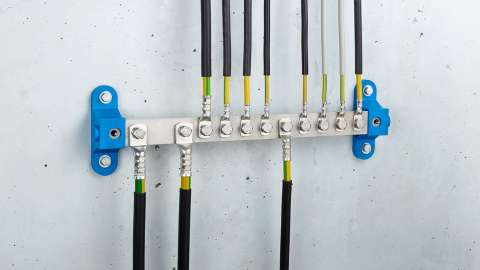
Cable lug connection
Thread in provided in the connection hole, spring washer secures against self-loosening.
Advantage:
Schneller, easier connection WITHOUT additional nut.
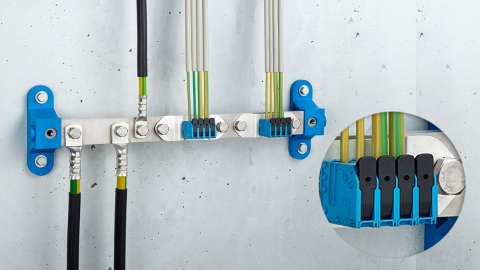
Push-in connection
Connection of flexible and rigid conductors up to 16 mm2.
Advantage: Installed quickly and easily without tools.
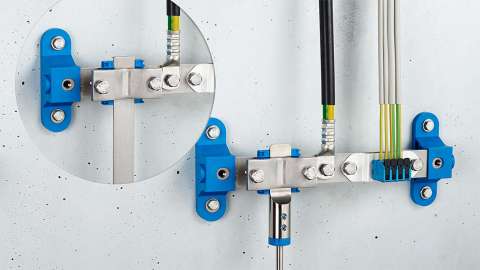
Flat and round conductor connection
Connection of flat conductors (30 or 40 mm) and round conductors (up to Ø 10 mm) possible with adapter.
Advantage:
Adapters ensure a defined, non-sparking contact between conductor and equipotential bonding bar by preventing conductors and terminal screws from touching.
Installation examples
This is how you master all challenges during installation.
Cable lug connection: A thread is provided in the connection hole. The spring washer secures against self-loosening.
Advantage: Quick and easy connection; an additional nut is not necessary.
Push-in connection Connection of flexible and rigid conductors up to 16 mm².
Advantage: Installed quickly and without tools.
Flat and round conductors: Connection of flat conductors with 30 or 40 mm and round conductors with a diameter of 10 mm possible. Special adapters available.
Advantage: With the two adapters, the flat and round conductors cannot come into contact with the terminal screws. They ensure a defined, non-sparking contact between conductor and equipotential bonding bar.
Downloads
| Brochure DS 380 | More safety in hazardous areas | Equipotential bonding | .pdf 1.6 MB |
Got any questions about
hydrogen systems?
We are here to help you. Contact us and we will answer them in detail.
You can reach your contact person at [email protected].
